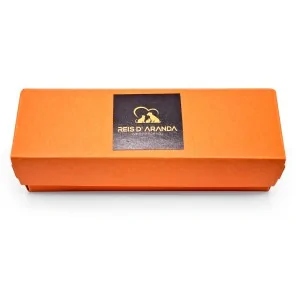Its name says it all: the Vienna blue rabbit comes from Austria. Not only is it beautiful with its shiny blue-grey...
THE GIANT BUTTERFLY RABBIT
INTRODUCTION
Known as butterfly rabbits, English spotted rabbits or English spotted rabbits, the butterfly rabbit is a breed of rabbit characterised by its beautiful spotted coat. The special thing about its spots is that they are distributed in a very particular way, giving this rabbit a unique appearance.
THE ORIGIN OF THE GIANT BUTTERFLY RABBIT
The English spotted rabbit is believed to be one of the oldest rabbit breeds, with origins dating back to the 19th century. The exact origin of the English spotted rabbit is unknown, but it is believed to be derived from the English butterfly rabbit or giant checkered rabbit due to their shared physical characteristics, such as cheek spots, butterflies, dark circles, coloured ears and herringbone.
The breed has been common in England since the 1850s and was imported to North America around 1910. The American English Spot Rabbit Club was established in 1924. The French called the breed ‘Lapin Papillon Anglais’, or the English butterfly rabbit because of the butterfly marking on the nose. Earlier generations of the breed involved a white rabbit with coloured spots and over the years it has acquired clearly defined markings.
WHAT IS THE GIANT BUTTERFLY RABBIT LIKE?
1. TYPE, SHAPE AND CONSTRUCTION OF BODY: The body is elongated and slightly cylindrical with adequate body length. Shoulders and hindquarters should be almost equally broad and muscular. The tail should correspond to the size of the animal and be long and well set on. The stance is medium high and has sufficient ground clearance. The head is striking and should be in harmonious relation to the size of the body. The ears should be in proportion to the size of the animal, strong and well placed, their length is usually about a quarter of the length of the body, ideally about 17 to 18 cm. A not too large and well formed dewlap is permitted in bitches.
Slight faults: Thin or wrinkled ears, slightly short, not corresponding to the size of the body.
SERIOUS FAULTS: Especially torso deviating too much from the type with insufficient length. Deviating from breed and type whether male or female. Deviation of head formation, ears less than 15 cm in length or completely different in position and shape.
2. WEIGHT:
- MINIMUM WEIGHT: 5.00kg.
- MAXIMUM WEIGHT: 10,00kg.
- IDEAL WEIGHT: 6,50kg
3. COAT: The coat should be of medium length, dense and even. The ears should be well covered with hair.
4. HEAD PATTERN:
- a) BUTTERFLY: The butterfly must be well marked. This includes a correctly rounded dome and full wings encircling the lower jaw on both sides.
- (b) EYE RING: The pattern does not touch any point, it must be closed and uniformly wide.
- c) CHEEK POINTS: The cheek points are separate from the eye circles, round or oval.
- (d) DRAWING OF EARS: Ears should be of one colour and with clearly defined root.
MILD FAULTS: Butterfly not well defined or unsightly. Absence on one side only of the lower edge of the jaw. Irregular or very thick circles around the eyes. Poorly coloured ears with poorly defined base. Dirty head (with spots).
SERIOUS FAULTS: Incomplete or missing butterfly; large spots on the wings of the butterfly. Complete absence of the lateral edge of the lower jaw. Closed edge of lower jaw. Mandibular points absent on one or two sides, or double. Eye ring not closed. Butterfly, eye and ear markings touching each other.
5. BODY DRAWING: The body drawing is formed from a line at the spine and the drawings of the sides.
- (a) THE BACK LINE: It runs smoothly and uniformly wide (approximately 3 cm) from the neck to the tip of the tail.
- (b) SIDE DRAWING: Consists of individual, not too large patches, approximately 3 cm in diameter, evenly distributed on both sides of the thighs and flanks, 6 to 8 side patches are desirable (chest, belly, legs and underside of tail are not taken into account).
Slight faults: Toothed, uneven, broad or narrow back line. Cuts in the line from the neck to the end of the shoulder blades or from the beginning to the end of the tail. Lateral pattern too close to the vertebral line; weak, incomplete or uneven lateral pattern (more than one point separated from the pattern on one or both sides of the body). Points less than 2 cm from the vertebral line are not considered as lateral drawings.
SERIOUS FAULTS: Clearly visible break in the course of the vertebral line, between the shoulder blades and the end of the tail. Lateral pattern meeting the back line. Coat pattern. More than two points outside the pattern chain. Less than three lateral points on one side. Total absence of pattern.
6. COLOUR: The solid colours (black, blue, chocolate and lilac) are recognised; the general colour rule applies to them. The ground colour is pure white, with a good gloss. The colour of the pattern is pure and not mixed with other hair colours. Small white patches on the neck and on the stripes from the neck to the shoulder blades in the area of the tail are not to be considered. The eyes of black/white and chocolate/white animals should be brown; the eyes of blue/white and lilac/white animals should be grey. Nails should be white.
Slight faults: Base colour with yellowish tinge. Impurities or white hairs intermingled in the pattern and ears. Flesh-coloured lip space. Small white tufts in the eye rings and in the eyelid area or in the lateral drawings.
SERIOUS FAULTS: Strong, impure pattern colour interspersed with white hairs. Two different colours in the pattern. White tip of nose. White lip space. White patches on the butterfly, on the eye rings, ears; except on the shoulder blades and tail. The colour of the eyes and nails should not correspond to the colour of the animal.
HEALTH OF THE GIANT BUTTERFLY RABBIT
Butterfly rabbits do not have congenital diseases, i.e. there are no diseases linked to their genetics. However, they are somewhat prone to some ailments, such as dental problems. All rabbits have teeth that never stop growing, but in some breeds the growth is faster than in others. This is the case with butterflies, in which if the teeth are not worn down quickly, they tend to grow too much, causing problems such as malocclusions of the mouth or dental abscesses.
Also, as we mentioned before, it is very important to watch the floor on which our rabbit rests. For floors which are too rigid or the bases of the mesh cages cause plantar sores, which are very painful and take a long time to heal.
WHAT IS THE GIANT BUTTERFLY RABBIT LIKE AS A PET?
The english spot is incredibly energetic and cheerful, being very playful and quite outgoing. They are such an active rabbit that they require at least 1-2 hours a day of play to burn off all their pent-up energy. In addition, this time of activity usually coincides with two moments, dawn and dusk, being calmer throughout the day. They like to enjoy company and do not like to be alone for too many hours.
They require good socialisation, as they are a very strong breed that can do a lot of damage if they kick us.
CONCLUSION
Being quite large, these rabbits need physical activity that other rabbits do not have. It is therefore important to make sure that they can run every day, either on a walk or in an enclosure. As they have a coat of unusual quality, it is recommended to brush them regularly. As for other rabbits, it is essential to change their litter box at least once a week and to trim their claws and clean their ears once a month.
Leave a comment
Log in to post comments
















